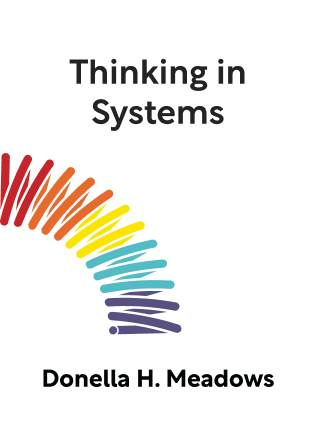

This article is an excerpt from the Shortform summary of "Thinking in Systems" by Donella H. Meadows. Shortform has the world's best summaries of books you should be reading.
Like this article? Sign up for a free trial here .
What is the system thinking theory? Why should you incorporate system thinking into your management tools?
System thinking theory is the ability to consider major management structures as systems. Thinking of companies, governments, and more as systems can help them run more efficiently.
Read more about the system thinking theory and how it works.
What Are Systems? Basics of System Thinking Theory
This overview explains the system thinking theory and how you can use the systems thinking approach.
A system is composed of three things:
- Elements: The individual things in the system
- Interconnections: The relationships between the elements
- Purpose or Function: What the system achieves
To define it more cohesively, a system is a set of elements that is interconnected in a way that achieves its function.
Many things in ordinary life are systems. Let’s define how a professional football team is a system and how they use the system thinking theory.
- Elements: The players, the coaches, the field of play, the ball
- Interconnections: The rules of football, the way players in specific roles interact with each other, how the coaches instruct the players, how the laws of physics govern how the ball moves
- Purpose: To win football games, to have fun, to make money
As you look around the world, you’ll see systems everywhere once you start using the systems thinking approach. So what is not a system? A set of elements that are not interconnected in a meaningful way or overall function is not a system. For example, a pile of gravel that happens to be on a road is not a system—it’s not interconnected with other elements and does not serve a discernible purpose.
In this chapter, we’ll dive deeper into understanding the three attributes of a system. We’ll then understand how systems behave over time, and how the interconnections can drive system behavior.
(Shortform note: in this chapter we’ll develop an extended example of a football team beyond what’s contained in the book, but in a way that’s consistent with its ideas. You should actively apply the ideas to develop your own examples of systems, such as a corporation, a university, a tree, or the government.)
How Systems Relate to Each Other
Now that you know the systems thinking basics, you probably want to know how systems work together. Because you can now see systems everywhere you look, you might have seen that systems can be composed of other systems, and so on in a fractal-like pattern.
For example:
- Each player on a football team is himself a complex system, consisting of his organ systems, his thinking, his own motivations.
- The multiple players together form a system of the playing team on the field.
- The players with the coaching staff form an overall system at a team level.
- The team combines with its fans and the overall city to form another system.
- The team combines with the other teams in the sport to form another system at the league level.
- The league combines with the other sports leagues in the world to form another system.
The systems can thus get quite complex, as we’ll explore throughout the summary.
The individual subsystems may have conflicting purposes from the overall system purpose, which can lower function of the system. For example, if the individual players on a football team care more about their personal reputation than the success of the team, the overall team system will perform poorly. For a system to function effectively, its subsystems must work in harmony with the overall system.
System Thinking Theory and System Behavior
Next, we’ll understand how systems behave over time, by considering stocks and flows. This forms the basic foundation that lets us build up into more complex systems in system thinking theory.
Systems Thinking
As you continue looking at the world through the systems thinking approach, you’ll see feedback loops everywhere.
In fact, here’s a challenge: try thinking of any decision you make without a feedback loop of some kind. Can you think of any?
You might start finding that many things influence each other in reciprocal ways. Instead of pure cause and effect, you might see that the effect actually influences the cause.
- If population growth causes poverty, does poverty also cause population growth?
- If the government makes a bad decision for the nation, did the nation do something to cause the government to make that bad decision?
Invert your thinking. If A causes B, does B also cause A?
This type of systems thinking makes blame much more complicated. It’s not an easy cause and effect relationship. It’s a system of interconnected parts and complicated feedback loops.
Now that you know that systems thinking basics, you’ll start seeing systems everywhere.

———End of Preview———
Like what you just read? Read the rest of the world's best summary of Donella H. Meadows's "Thinking in Systems" at Shortform .
Here's what you'll find in our full Thinking in Systems summary :
- How the world, from bathtub faucets to fish populations, can be seen as simple systems
- The key system traps that hold back progress, such as escalating arms races and policy addiction
- Why seeing the world as systems can give you superpowers in work and life






